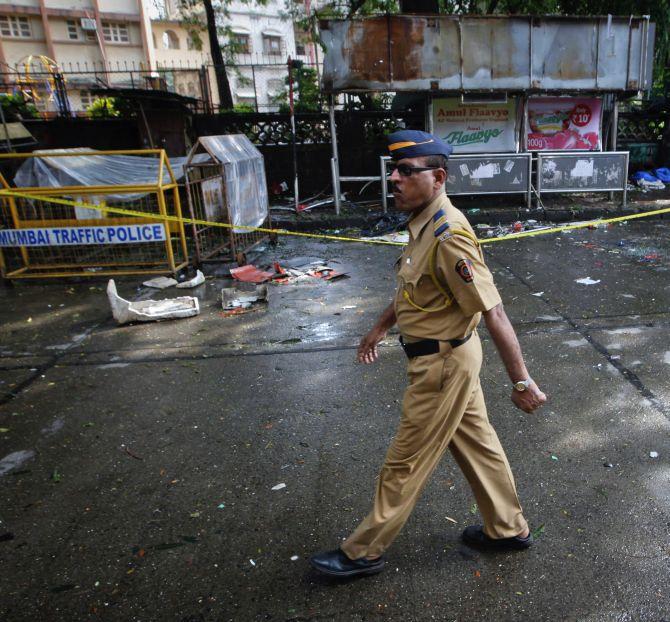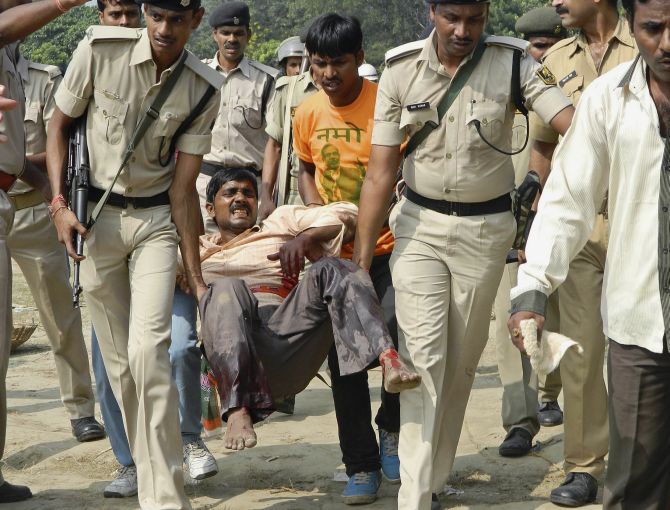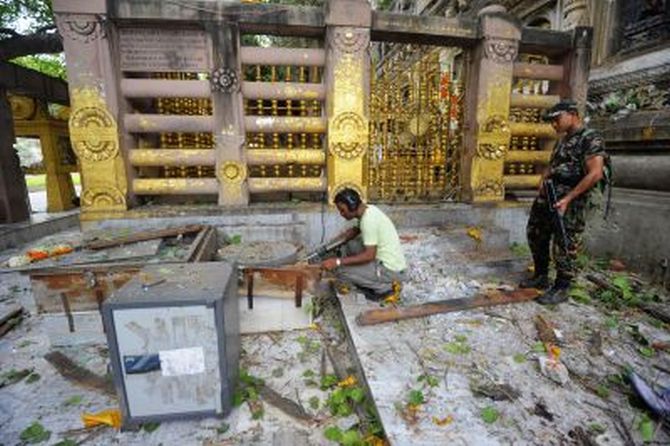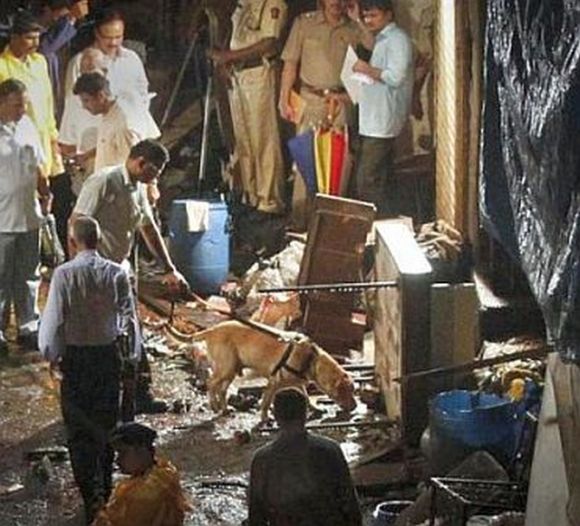 | « Back to article | Print this article |
What makes IM the most dangerous terror outfit in India
Rediff.com’s Vicky Nanjappa enumerates the deadly modules created by the Indian Mujahideen and what their strengths and goals are
Yasin Bhatkal, the Indian Mujahideen co-founder, has created, nurtured and developed possibly the most dangerous terror modules in the country. The National Investigation Agency on Thursday filed its second chargesheet against Yasin and his close associate Asadullah Akhtar in connection with a case of alleged conspiracy to carry out terror acts in the country.
The National Investigation Agency names four modules -- Darbhanga, Ranchi, Samstipur, Goa and Mangalore -- of the Indian Mujahideen set up by Yasin Bhatkal and his aides, Asadullah Akthar, Manzar Imam, Ujjair Ahmed and others.
Let’s look at the role each modules played and take into account their strengths and goals.
Click NEXT to read further...
Ranchi module
This is probably one of the smallest yet deadliest modules of the Indian Mujahideen today. The Ranchi module was the last one Yasin set up before he was arrest. It was a deliberate attempt to cull it out of the Darbhanga module to focus on specific targets with religious involvement. This module was solely responsible for the Bodhgaya and Patna blasts.
The assassination plots against Narendra Modi (BJP’s prime ministerial candidate) were all planned by the Ranchi module of the Indian Mujahideen.
It has a force of around 20 operatives. This relatively new module headed by Tehsin Akthar has carried out two major operations -- Patna and Bodhgaya blasts.
Each attack was carried out to send across a strong message. In the case of Bodhgaya, the message was to protest the atrocities against the Rohingya Muslims. The Patna blasts were directly aimed at Modi and were part of several assassination plots.
Click NEXT to read further...
Darbhanga module
This is the biggest module of the Indian Mujahideen. Despite so much being written about it and the module being under heavy scrutiny, the IM continues to use it as a safe hideout.
Investigators say the Darbhanga module is the toughest to crack since it is vast and there are operatives who enjoy local support, and political patronage. The influx of illegal Bangladeshis in area has only made matters worse for the police.
After coming under heavy scrutiny, the IM has put the module into sleep mode. However, there are still a good number of operatives who take shelter here as they know agencies find it hard to penetrate the module.
The Darbanga module has been responsible for some of the worst attacks on Indian soil, masterminded by Yasin. The blasts carried out in the past three years have claimed 150 lives. Ironically, apart from the IM, Darbhanga has become a safe hideout for illegal Bangladeshis.
Click NEXT to read further...
Samastipur module
Like the Ranchi module, the one at Samastipur too is an offshoot of the Darbhanga module. Yasin’s wife hails from Samastipur. One reason for the IM to have a module here is due to Tehsin Akthar’s strong links. He is related to a local politician who according to the Intelligence Bureau has helped the IM a great deal.
The Darbhanga module has around 100 operatives and they often shift to Samastipur when there is a search operation launched by the police.
The NIA points say that during investigation they had found that most operatives were ordered to keep shifting bases after a bomb blast. It was found that after the 13/7 Mumbai blasts, Yasin, Asadullah and Tehsin shuttled between Darbhanga, Samastipur and Madhubhani to avoid the police. In Samastipur, some of these operatives have human shields when there is a search operation. The local administration too has been very unfriendly and investigating agencies suspect it is due to pressure from local leaders.
Click NEXT to read further...
Goa module
The Indian Mujahideen has set up 10 modules in Goa. Although not as active as it used to be a year ago, security agencies say the IM can activate these modules at a very short notice.
The Goa modules comprise operatives from Maharashtra and Karnataka. There were nearly 60 members who were recruited between 2012 and 2013. The idea to set up the Goa module came up when Yasin visited Vasco in 2011. Goa being a tourist destination, any attack here would give it an international coverage and also create an impact.
The Intelligence Bureau’s reports on Goa show that there have been surveys carried out by the outfit at hotels and other tourist destinations. Surveys were specifically carried out at hotels in Margao and Fatorda. The primary targets were Israeli and American nationals.
Click NEXT to read further...
Mangalore module
Despite hailing from Bhatkal, Yasin made his entry into the Indian Mujahideen with an operation in Mangalore/Udupi. The Karnataka Police, which first found about the IM, says that it was from Udupi that the first consignment of ammonium nitrate was smuggled and sent to various parts of the country. This entire task was overseen by Yasin, according to the Karnataka Police.
Mangalore continues to be one of the most dangerous modules of the IM today. The area is communally sensitive, which helps the IM a great deal. Moreover, this module has always been used as a laboratory for the IM. After the various blasts, IM operatives always gathered at Mangalore and experimented with new techniques. The last time there was a raid after the arrest of Yasin, the police found a lot of bomb making material in an apartment.
The IM was trying to improvise its bombs and were trying to move away from the usual ‘Samay quartz’ timer to an electronic timer so they could be more specific with the blast.
The Mangalore module has also virtually become a fund collection point. The proximity to Kasargod in Kerala, the influx of Gulf population, the underworld and of course the ports have all made it an ideal place for the Indian Mujahideen.
TOP photo features you missed last week
Click on MORE to see another PHOTO feature...






